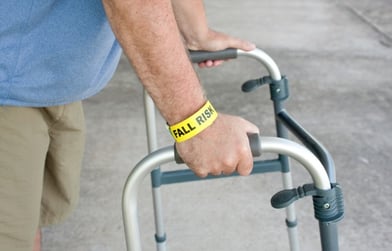 How did we get this overweight, this quickly? In part one of this series, we talked about what obesity is and if it's really a disease, you can read that here. Obesity has been around since recorded history, but never to the degree we have experienced the past 30 years. In nature, people and animals who store energy are more likely to survive famine, yet there is more food available now than ever. Several experts feel we’ve encountered the “perfect storm.” We’ve experienced a significant change in our environment with increased stress levels, while sleep, free time, and activity levels have decreased. In our food, nutrient levels have decreased while use of chemicals and preservatives has majorly increased. (Side note: Did you hear Twinkies are coming back with an increased shelf life of an additional 3 weeks? They aren’t just refrigerating those things.) Let’s look at a few of the causes of this increase in weight gain over the past 30 years.
How did we get this overweight, this quickly? In part one of this series, we talked about what obesity is and if it's really a disease, you can read that here. Obesity has been around since recorded history, but never to the degree we have experienced the past 30 years. In nature, people and animals who store energy are more likely to survive famine, yet there is more food available now than ever. Several experts feel we’ve encountered the “perfect storm.” We’ve experienced a significant change in our environment with increased stress levels, while sleep, free time, and activity levels have decreased. In our food, nutrient levels have decreased while use of chemicals and preservatives has majorly increased. (Side note: Did you hear Twinkies are coming back with an increased shelf life of an additional 3 weeks? They aren’t just refrigerating those things.) Let’s look at a few of the causes of this increase in weight gain over the past 30 years.
Let’s eliminate pre-existing diseases which lead to weight gain from the start. Pre-existing diseases have not seen much of a change over time and our diagnosis and treatments have improved drastically. For that reason, it’s easy to eliminate this from the causes of our recent epidemic. As a quick example, let’s look at hypothyroidism, an underactive thyroid gland, or type 1 diabetes, when your body does not produce insulin and breaks the ability to convert sugars, starches and other food into energy. If untreated, these two diseases can cause significant enough hormone imbalances to slow the metabolism and induce fat storage.
Next, when the first law of thermodynamics is applied to the world of health and fitness, “The change in internal energy of a body is equal to the heat supplied to the body minus work done by the body”, it can be roughly translated as “calories in vs. calories out.” This is a point many argue on. If this were the only factor to consider, weight loss would literally be as simple as a math problem. If it was true, it would mean everyone who is overweight or obese is just lazy and eats too much. Eat less, exercise more! But then why, according to the Institute of Medicine, is there an increase in obese children under two years old? They don’t diet and exercise. Are you going to call them lazy? Unfortunately, the issue is not as simple as “Eat less, exercise more!” and goes way beyond personal responsibility for any age. Thinking the answer is simply “calories in vs. calories out” is wrong and ignorant. Personal responsibility is only a part of the equation for many people; nonetheless, assessing dietary trends is critical to solving the issue. As well, average caloric consumption is up and average activity levels have decreased with the advancement of technology.
In February of 1977, the U.S. government released a directive urging Americans to “Reduce overall fat consumption from approximately 40 to 30 percent of energy intake” in an attempt to lower the occurrence of heart disease, our #1 cause of death in the U.S. According to the CDC, since roughly that same time mean caloric intake has increased, mean percentage of calories from carbohydrate has increased, and mean percentage of calories from total fat and saturated fat has decreased. In addition, we’ve experienced not just an increase in carbohydrate over that time but more specifically an increase in sugar. In 1975 our average sugar consumption per capita was roughly 25lbs/yr; we hit over 100lbs/yr per capita in 2000 and it is now estimated to be over 150lbs/yr per capita. This coincides eerily with our obesity epidemic. So we’ve succeeded in adopting our hallowed low fat diets but we’ve only gotten fatter and heart disease is still our #1 killer.
In my opinion, this change in our diets has caused a wide-spread toxicity and hormone imbalance in our bodies; our epidemic. Americans (and now much of the world) are sick and it’s not because we’re lazy. Of our total sugar consumption, much of it is estimated to come from High Fructose Corn Syrup (HFCS). HFCS is a man-made sweetener introduced to the U.S. in … you guessed it… 1975. Use of HFCS has increased at about double the speed of standard sucrose (table sugar) since its introduction. You’ll find more foods at the grocery (roughly 60-80% of products) packed with sweeteners and chemicals than those without. Now we can’t simply correlate the introduction and steady incline of HFCS or other chemicals to our obesity epidemic, but it’s certainly a culprit and part of the equation at least, causing a huge debate all by itself.
What are your thoughts? Comment below and look for my 3rd post in the 3-part Obesity Blog Series on the cure for obesity.

 We see it, we eat it. Usually that’s how it goes, right? Of course we eat too much, but is it really our faults? Well, unfortunately for Americans, the portion distortion mania has gotten out of hand—and so has obesity. Over time, we’ve gotten so used to the larger portions being served at restaurants, we’ve come to think this is normal. Then of course that thinking spills over into a food addiction at home, too. More food, more food, more food. The craziness needs to stop now! (Here are some tips for portion control at home.)
We see it, we eat it. Usually that’s how it goes, right? Of course we eat too much, but is it really our faults? Well, unfortunately for Americans, the portion distortion mania has gotten out of hand—and so has obesity. Over time, we’ve gotten so used to the larger portions being served at restaurants, we’ve come to think this is normal. Then of course that thinking spills over into a food addiction at home, too. More food, more food, more food. The craziness needs to stop now! (Here are some tips for portion control at home.)

 Obesity is an epidemic in our society today. Those who are obese have greater risk of diabetes, coronary artery disease, stroke, and arthritis.
Obesity is an epidemic in our society today. Those who are obese have greater risk of diabetes, coronary artery disease, stroke, and arthritis.
 In 2012, more than a third of children and adolecents were
In 2012, more than a third of children and adolecents were 
 Whether we like it or not, we have an epidemic on our hands. Whether you are overweight, obese or not, classifying obesity as a disease will affect you, if it hasn’t already. Changes are in order. Simply classifying obesity as a disease does not make the necessary changes automatically occur and I’ve already expressed my concern with the direction I think this could go.
Whether we like it or not, we have an epidemic on our hands. Whether you are overweight, obese or not, classifying obesity as a disease will affect you, if it hasn’t already. Changes are in order. Simply classifying obesity as a disease does not make the necessary changes automatically occur and I’ve already expressed my concern with the direction I think this could go.  How did we get this overweight, this quickly? In part one of this series, we talked about what obesity is and if it's really a disease, you can read that
How did we get this overweight, this quickly? In part one of this series, we talked about what obesity is and if it's really a disease, you can read that 
 Officially, one-third of the U.S. is now ill. The American Medical Association has voted and
Officially, one-third of the U.S. is now ill. The American Medical Association has voted and  Have you heard this
Have you heard this  Body Mass Index (BMI) vs. Body Composition: These measurements are used in the healthcare and corporate fitness worlds to help identify risk for heart disease, diabetes, stroke, and cancer. But which is best? Many experts reason that both tools can be useful in different circumstances.
Body Mass Index (BMI) vs. Body Composition: These measurements are used in the healthcare and corporate fitness worlds to help identify risk for heart disease, diabetes, stroke, and cancer. But which is best? Many experts reason that both tools can be useful in different circumstances.
 You know the feeling. The alarm clock is ringing and you're thinking, “If only I had one more hour to sleep.” Americans tend to lose about an hour of sleep per night (about two full weeks of slumber per year), pushing our bodies into
You know the feeling. The alarm clock is ringing and you're thinking, “If only I had one more hour to sleep.” Americans tend to lose about an hour of sleep per night (about two full weeks of slumber per year), pushing our bodies into  .7 percent in the adult population and 16.9 percent in children. Over the past two years (2009–2010), there were significant increases in obesity for men of all ethnic backgrounds compared to data from the previous studies (1999–2010). There were no significant increases among women overall, but researchers found statistically significant increases in African-American women and Mexican-American women. Another sobering finding of the studies is that children are going into adulthood weighing more than ever before.
.7 percent in the adult population and 16.9 percent in children. Over the past two years (2009–2010), there were significant increases in obesity for men of all ethnic backgrounds compared to data from the previous studies (1999–2010). There were no significant increases among women overall, but researchers found statistically significant increases in African-American women and Mexican-American women. Another sobering finding of the studies is that children are going into adulthood weighing more than ever before.